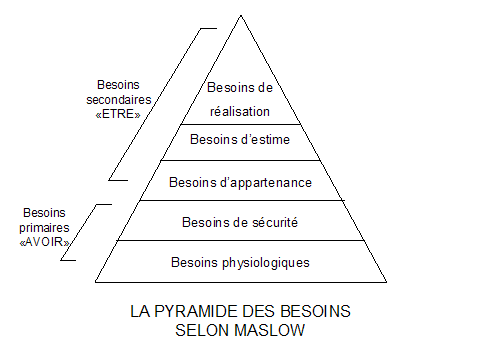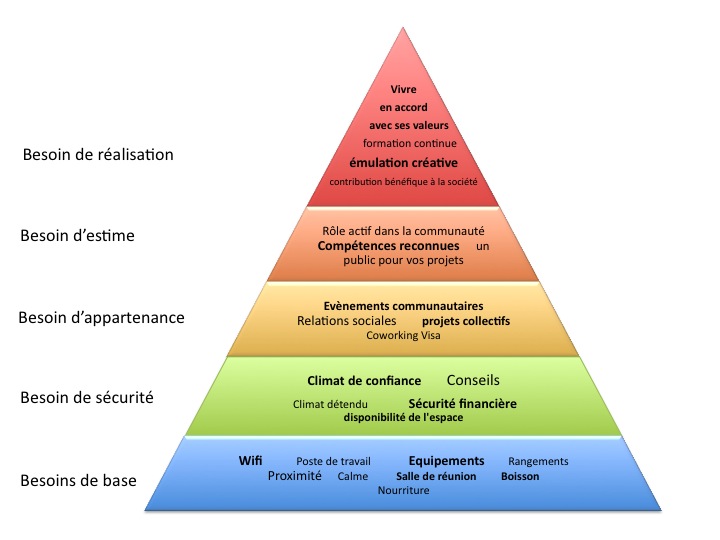For more than ten years we have been hearing about the CSR : the famous Corporate Social Network. Except that in practice, apart from certain large structures, or certain start-ups which use messaging systems like Google Teams, we do not see many organizations which have taken the time to implement a sort of intranet which would allow employees to simply find information inherited from several years of experience from a simple search.
Indeed, messaging or project progress management are roughly the two most used tools in companies, but few organizations use tools that provide simple access to information in “collaborative” mode. ". Some employees – especially new ones – sometimes get lost for several months searching for information, discover it, ask for it from former collaborators before being perfectly operational.
It's a shame, because the experience that comes from several years of practice and work should be able to be better exploited, through knowledge bases which would be accessible and editable at any time. This would waste less time, streamline management, and improve expertise within an organization.
So what are the advantages of a corporate social network? What types of organizations is it suitable for? What issues underlie the implementation of a CSR, and in what ways can it be installed? This is what we are going to see here.
First, a quick definition of what a Corporate Social Network, before focusing on the issues, advantages and limitations that result from it!
Note: This chapter initially published in 2012 then republished in 2023 is the 7th in a series of course on Management 2.0, the summary of which can be found here.
1 – Definition of a CSR
No, CSR does not mean here Corporate Social Responsibility, but rather Corporate Social Network. It is, in short, a social network bringing together members of an organization and which aims to foster collaboration, teamwork, mutual aid, exchange, sharing and horizontal communication.
The concept of CSR is inspired on the one hand by existing social networks such as Facebook, Twitter, LinkedIn & others, but also by collaborative platforms such as discussion forums (formerly Hardware, Commentçamarche, more recently Stack Overflow) and question sites - answers (formerly Yahoo Question Answer, more recently Quora).

Now that the concept is clearer to you, we can get to the heart of the matter, discussing the advantages of a CSR, before focusing on the ways of implementing it and the issues it raises.
2 – Create shared collective intelligence
The main advantage of a CSR is located in this precise point: that of shared collective intelligence. By promoting exchange and communication, you create through CSR a database that collects ideas, case resolutions, practical tips, etc…
This database has inestimable value in terms of productivity, because it allows your employees to find solutions quickly, without having to get lost in endless documentation, get discouraged or ask for help here and there.
The idea is to allow your colleagues to help each other, and to keep track of this mutual help, similar to the databases of consulting companies, which keep the processes carried out for their clients, so as to put them available to teams in the same sector.
3 – Value skills, individuals and self-esteem
By creating a CSR, you highlight the people and their SKILLS. The objective is not to classify individuals according to their hierarchical position, but by areas of expertise. Therefore, in large decentralized companies, the CSR favors exchange between individuals represented by their profile on the network, and this mutual assistance allows everyone to flourish through your professional identity.

Just as Facebook, Foursquare or Pinterest play on the navel-gazing of consumers and the exacerbation of their cultural and consumerist identity, THE CSR must be able to highlight professional identity in order to boost the happiness And self-esteem at work.
In addition, a person's profile on an RSE does not only include the skills, profession or projects in which they participate, but also certain extra-professional centers of interest (sport practiced within the company by example) which further forge each person’s identity.

Finally, the fact of doing circulate information, helping juniors with their problems and providing solutions to the company is rewarding in terms of self-esteem (see Wikipedia or discussion forums), which creates a sort of virtuous circle around the circulation of knowledge and collective pedagogy.
The philosophy defended by an RSE is therefore clear: improve the productivity and creativity of your employees not only through exchange, but also through an atmosphere of professional development.
4 – Manage change management
 There are several factors that could dissuade organizations from implementing an ESR.
There are several factors that could dissuade organizations from implementing an ESR.
- First of all, natural and human resistance to change, and the effort that learning and the use of new tools require sometimes slows down employees from using the RSE put in place.
- There is also a resistance consisting of those who have no interest that there is a sharing of information, in particular employees who consider that information is expensive and that it should not be distilled so easily
- The fear by employees or unions of using a network established by their hierarchy.
- Fear by management of a non-existent or intangible return on investment
These fears are often unfounded, although I will not spend time counter-arguing them in this post. I would just remind you that digital collaboration has enabled the advent of revolutionary open source projects like WordPress or jQuery for example. This shows that dematerialized and decentralized team work is good.
To better support employees in managing change, several solutions are possible:
- Call on change management consultants so that they can contribute their points of view.
- Call on IT consultants for employee training.
- To propose the tools but do not impose them.
- Raise awareness opinion leaders to the use of these tools.
- Offer the tools in a simple form, making improvements over time. Do not offer a complex and complete tool from the start.
- Raise awareness among managers who do not want information sharing to the new challenges to be addressed: creativity, increasingly horizontal hierarchical lines, and managers led to also become coaches.
- Dispel misunderstandings by being transparent about the application of current legislation.
5 – Ensure data protection
 The implementation of an RSE raises questions relating to Economic Intelligence. What happens to critical data when it is shared across a corporate network?
The implementation of an RSE raises questions relating to Economic Intelligence. What happens to critical data when it is shared across a corporate network?
Two obvious avenues should be explored in terms of data protection within an RSE:
– The first is to put the package at the IT level by securing CSR as much as possible to avoid hacking.
– The second consists of carrying out a control to prevent people from providing confidential information.
On the other hand, it seems impossible to prevent the leakage of certain processes to competing companies. However, these leaks have always existed, with or without CSR, which leads us to believe that the processes used by companies in the same sector are often the same, unless otherwise chosen by managers and executives.
In fact, the objective is to streamline access to these processes, and not to protect them because they are already known to experts in the same sector.
6 – Enforce the rights and duties of participants
Surrounding yourself with competent lawyers is one of the foundations when installing an RSE within a company. Furthermore, each employee must participate by stating their true identity, in order to avoid any excesses. The RSE should not be a private chat where employees talk behind the backs of others, but a real collaborative space for exchange which conveys positive values of sharing and mutual aid.
7 – Extend access to the RSE as much as possible
The objective is twofold:
- On the one hand, allow to everyone to access information in order to facilitate their work.
- On the other hand, ensure that creativity can come from anywhere in the hierarchy.
Therefore, we must make access to CSR intuitive and simple, while ensuring not to block innovation, wherever it comes from.
8 – Cultivate the informal nature of the network
This measure aims to reduce the vertical hierarchy to encourage exchange. It is fashionable not to highlight the hierarchical position of individuals but rather their skills and the projects they are working on. Thus, the merit goes to the one who brings (or raises through his questions) ideas and solutions, regardless of the position in the box.
On this precise point, the RSE makes it possible to reveal certain personalities which until then had been completely overlooked, either out of shyness, or because the talent was not communicated or because it was taken over by others.
9 – Create communities and improve the sense of belonging
An obvious point for those familiar with RSE, the fact of create communities, that is to say working groups based on the sector, projects or even hobbies accessible via the company (CE, sport, vacations, etc.) boosts communication within the RSE – and therefore the company – and allows everyone to find themselves within their community.
The Facebook generation or open-source programmers will know very well what I'm talking about, through the private academic work groups on Facebook or the information sharing and mutual help that can be found on Google Groups or forums mutual aid.
10 – Some examples of modules to be provided in an RSE:
- Of the forums discussions per community.
- A messaging private.
– A module of Questions answers by community, where the complete list of questions is accessible from one page but where it is possible to filter the questions and answers according to the sector or the themes covered.
– Curation and publication of information corporate, with subscription possible depending on the themes covered.
– Personalization of profiles serious but playful.
- A powerful search engine to find data, questions and topics that addressed a specific subject.
In my opinion, these are 10 fundamental points relating to the problem of corporate social networks. There are certainly others that I haven't thought of or that I haven't developed too much for the sake of synthesis, so don't hold it against me 🙂
Practical example of a social network in an unexpected domain
To keep it completely free, I personally implemented a simple WordPress, which I made private with mandatory user connection, and in which I offer content for internal use for teams, content that employees can also edit if necessary.
In addition, you should know that I use this content for the benefit of employees of a small company which is not at all in the digital world but in the restaurant and hotel industry, which clearly shows the interest of this type of tool for organizations that we would not have thought of at all!
Moreover, it is precisely in this type of company, where there is sometimes a lot of turnover, that it is useful to have documentation available in order to streamline training new employees and their integration into the company. This precisely avoids time-consuming repeated training. I also recommend to use the video format for everything related to tutorials and training, and if necessary the use of QR codes directly accessible physically in the places concerned by the training.
There are also other free WordPress plugins that can help set up more advanced intranets, such as the BuddyPress social network plugin (a little heavy nonetheless), or even WordPress extensions that allow you to set up knowledge bases.
If you have any suggestions for professional social networks or modern intranets, the comments section is open to you! And if this article was useful to you, don’t hesitate to share it <3
Chapter 8: Culture of innovation, how to digitalize an organization from the inside? »
« Chapter 6: Statistics and surveys as a barrier to innovation

One Response
Excellent article still relevant!
Is there a particular CSR IT tool that makes it possible to place this approach at the heart of a small business?
THANKS